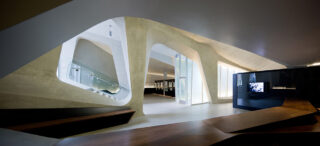The AT&T Building: Philip Johnson and The Postmodern Skyscraper
Sep 26, 2023
+ Add to Calendar
2023-09-26 18:00:00
2023-09-26 19:00:00
America/New_York
The AT&T Building: Philip Johnson and The Postmodern Skyscraper
The unveiling of the design for the new headquarters for AT&T, then the largest company in the world, appeared on the front page of The New York Times on March 31, 1978 and was quickly dubbed “the first Postmodern skyscraper.” The tower’s architect was Philip Johnson, who had championed the minimalist and functionalist aesthetics of the European avant garde as a curator at MoMA in the 1930s and had collaborated with Mies van der Rohe on the Seagram Building in the 1950s. With its
Online


